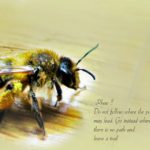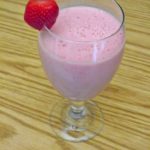The British magazine The Economist rated Pittsburgh as the best U.S. city to live in and the 29-best city in the world to live in. Pittsburgh was host to the G-20 summit, becoming the public face of the United States to the other nineteen attending nations.
As both the most livable city in the U.S. and the city chosen to showcase the U.S., Pittsburgh seems like a perfect tourism location. Surprisingly, despite a few highlights, especially in arts and dining, many of the famous or entertainment-oriented locations in Pittsburgh should be avoided by the average tourist.
Pittsburgh Zoo & PPG Aquarium
For local residents, this animal habitat is a fine location for a pleasant day with family. But, a tourist location, this zoo is not. The zoo and aquarium are both on the small side, and there is not a single animal that can’t be found elsewhere. At a very leisurely pace, a full tour of the exhibit may take three hours, but on average, it will take slightly less than two, and there are very few exciting animals.
The Central Park Zoo in New York City has nearly the same quality of animals while being easier to navigate. The zoos in both Philadelphia and San Diego are much more impressive, with a significantly wider range of animals and higher quantity as well. Visiting a zoo that is likely to be no better than a local option is a poor choice for any tourist.
Carnegie Museum of Natural History
Despite its name, this museum actually showcases both natural history and fine art. The entry fee is rather inexpensive, especially for students and children, but that is the only real perk of this tourist spot. The natural history side of the museum has absolutely no unique exhibits, and children will likely be disappointed at the small size of the dinosaur exhibit.
The fine arts side of the museum is even more disappointing, having very little in the way of art from major artists of the past, with the exception of some Warhol paintings. There are much better museums in D.C., Philadelphia, and New York City, on just the East Coast alone. For most tourists, this will just be simply disappointing.
Strip District
Touted as the “historic” Strip District, this Pittsburgh neighborhood, just east of downtown Pittsburgh, is supposed to be one of the things Pittsburgh is famous for. Whatever history it does or doesn’t have, the majority of the Strip District is now run-down warehouses. There are a few unique and intimate shops and restaurants in the neighborhood, but only locals truly know where to find them, and parking is terrible.
During the day, the neighborhood is relatively safe, but at night, police patrol it regularly, and crime is still incredibly common in the area. This shouldn’t be too problematic for a tourist, though, since the nightlife in the area is primarily clubs and bars that are only really exciting for locals.
South Side
Known for having some of the best local food in Pittsburgh and a modicum of shopping opportunities, the South Side district of Pittsburgh is nearly as famous as the Strip District. Parking is easier on the South Side, but the neighborhood is even more run down. The main road, Carson Street, is rather clean and safe, but one block in either direction, the neighborhood quickly goes downhill.
Unfortunately, these side streets are where most of the parking is, and cars parked in the area are very likely to be stolen or burglarized. To get some of the best food in Pittsburgh, it may be worth taking a taxi to the South Side, eating, and then leaving in another taxi, but the neighborhood simply isn’t safe or friendly enough to be worth an extended visit.
Residents of Pittsburgh tend to have a lot of pride in their city. Often this pride is expressed negatively as disdain for non-locals, and the insular attitude can make Pittsburgh a difficult city to be enjoyed by tourists. Despite this, Pittsburgh was chosen as the site of G-20 for a number of good reasons, including some impressive local attractions, including Pamela’s, the National Aviary, Mt. Washington Incline, and the Carnegie Science Center.
By avoiding the previously identified locales that generally cater more to locals than to visitors, a tourist can enjoy a pleasant weekend in the city of Pittsburgh.





